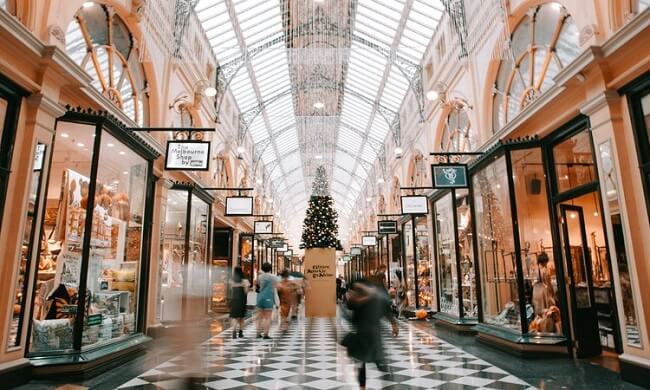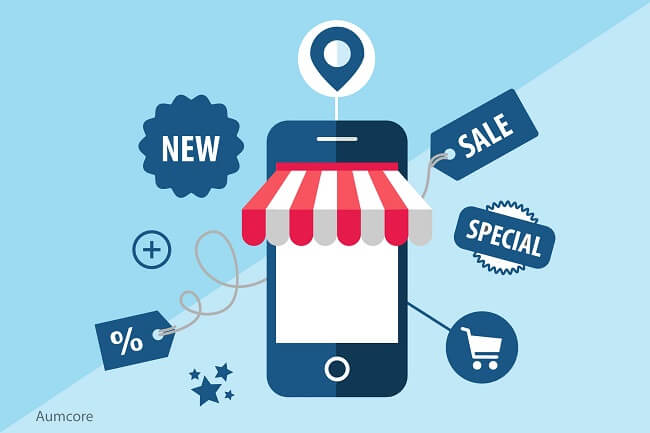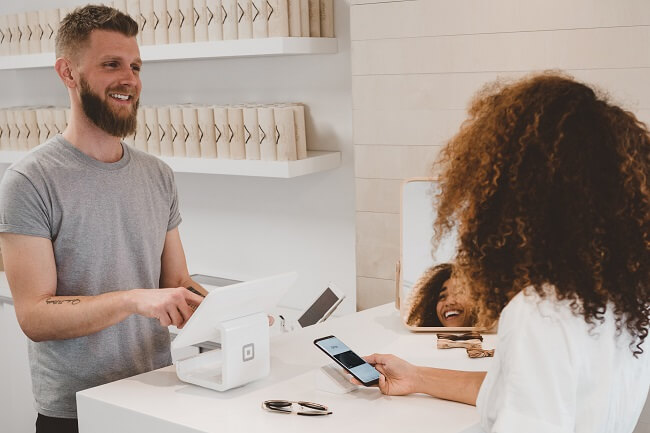Geofencing is not a new idea. In fact the technology has been around for a while but only recently have marketers latched onto the potential it has to be effective. However, as the technology is always developing and improving, marketers are now able to find clever new ways to implement it effectively into their wider advertising campaigns. But exactly what is geofencing used for and how effective is geofencing when it comes to driving increased sales and conversions?
How Geofencing Works
Put simply, geofencing is a form of instant location-based advertising that basically follows the following steps:
- You identify a geographical radius around a real-world location, say your physical store
- Set up a geofence, or virtual barrier, around this location in each direction for a determined area of space.
- When a device, such as a mobile phone, either enters or exits, an event can be triggered like a push notification informing the user of your store’s products or a flash sale that is occurring in an attempt to get them to engage with your company.
But, with continued advancements in technology and marketing methods, geofencing is now able to go beyond just simple moment marketing and instead can be used to identify, build, and maintain a large addressable audience over a significant period of time. The marketing element to this approach happens when people break the virtual barrier and enter into the specified area you have designated. Once the boundary has been breached, the geofenced campaign can be triggered and targeted messaging based upon gathered insights and data is delivered.
But this leads us to some very important questions that need answering, namely what is geofencing in marketing doing to improve conversions and how accurate is geofencing when implemented in a real world situation?

The Advantages and Limitations of Geofencing
When it comes to marketing, any advantage you can find to improve the positioning and visibility of your brand should be utilized. In regards to geofencing specifically, there are several advantages that make it an attractive approach for companies and marketers alike. These include:
1. A Small GeoFence Equals Targeted Marketing: Connecting with a local audience on a personal level is crucial for businesses of all sizes. By achieving this you can instantly and organically elevate your brand’s image with potential customers who are in a close proximity to you. When consumers recognize that your brand is in touch with their local lifestyle and community, as opposed to being a faceless, generic company viewed as an outsider, their perception of you will improve. By incorporating topics relevant to specific customers and a specific area, brands can create stronger impressions that increase the likelihood of customer conversions.
2. Well-Targeted, High Quality Content: When you cast a wide geographical net for your content publication, immediately the power of it can be reduced. It is automatically less likely to resonate with people who are in many different locations from different walks of life. Geofencing however encourages a precise, tailored content targeting a specific section of a consumer base all within the same area. Ultimately, this has the potential to build a strong brand image for your company within this area which will add more weight and gravitas to the content you are creating.
3. Connect With Likely Customers: The majority of companies in today’s world sell online. This means your brand is likely to rely heavily on customer orders who may be far away from your physical store locations. However, local customers in close proximity to your stores can be crucial to your brand being a successful entity. With geofencing marketing, it allows you to forge a strong following oriented around local people that you can expand over time. This can be doubly effective if you have multiple store locations where you have the ability to create additional geofences and grow your customer base even more efficiently.
4. Time Specific Content: Geofencing is great for creating and curating time specific content. This can be a new promotion you have just started and looking to drive customers into stores or a flash sale that will only be lasting for a limited period of time. Either way, geofencing can help in these situations. A marketing campaign that incorporates geofencing makes it much easier to spread the word to the customers who are the most likely to be able to take advantage of these fleeting, transient offers in a physical location.
However, this approach may not be effective for everyone and there are some geofencing limitations that you need to be aware of before making it a cornerstone of your marketing strategy. In some instances, a device will register as being inside a geofence when it isn’t and if your store is in a busy city or tricky location, devices may find it difficult to recognize exact locations or receive false information.
In other words, geofencing has to be accurate. If you are looking to offer the best possible customer experience to your consumers, your ads have to be relevant, and they have to be accurate. When you are just sending these messages to every person who walks past your store, it will not be successful. Instead, these messages need to be targeted at the right people who will be able to give you the best return on investment.

How It Helps For Location-Based Marketing
Geofencing in marketing is an effective way to reach consumers at the best possible time. But for brands that want to identify larger groups of relevant consumers, location-based audience segments might be the better alternative. These segments are still based on real-world locations, carry realistic intent and are scalable due to being built over a longer period of time. Incorporating elements of geofencing, location intelligence and VPS are all ways marketers can look to get an edge on the competition.
So let’s take a look at some examples of brands who used geofencing and location-based marketing effectively to build a campaign that generated buzz and sales:
1. Whole Foods: The food retailer created an aggressive geofencing strategy. Firstly, they built geofences around each store location. When customers crossed into them, they automatically received alerts and promotional offers for their nearest Whole Foods location. However, Whole Foods then took this one step further and leveraged geofences placed around local competitors. When potential customers entered into these geofences, they also received offers from Whole Foods designed to tempt them away from competitors and instead back to one of their nearby locations.
2. Sephora: Sephora’s “store companion” geofencing feature clicked into life the moment a customer entered a store. From it the customer received information on past purchases, product recommendations and reviews. It also detailed limited-edition offers, wish-list product availability, as well as store experiences and happenings on that specific day. This helped build an incredible customer experience and increased satisfaction through location-targeted messages. Also, if a customer had an unused gift card, they got a reminder when entering the geofence encouraging them to use it.
3. Burger King: When it comes to marketing, there’s a reason the Burger King has a crown. Similar to everything they do marketing wise, Burger King nailed their approach to geofencing. Their “Whopper Detour,” which involved building a 600 foot geofence around McDonald’s restaurants was a savvy piece of marketing as well as an incredible way of trolling the competition. They encouraged customers to go to McDonald’s, but as soon as they entered this geofence they unlocked a deal for a one-cent Whopper on their app. The risky promotion resulted in their app being downloaded over 1,000,000 times rising to first place in the App Store’s food and drink category, as well as being able to showcase their sense of humor and brand identity.
Tips For Geofencing Campaigns
So with some brands to take inspiration from, we’ll leave you with some simple tips to follow when it comes to forming your own geofencing campaigns:
- Collect as much data as you can before starting
- Target specific users within your geofence as opposed to everyone who enters it
- Connect your physical store locations with a user’s online profile, eg. their wish list, previous purchases, recommended products etc
- Use it to promote fleeting or limited offer sales and promotions to drive consumer interest
- Continually assess and adapt your geofencing approach. It needs to always be up to date and accurate
- Be creative with your messaging, this a great way for you to stand out from the crowd so embrace it
A well-targeted geofencing campaign is a great way for you to build a loyal, local customer base that engages with your audience in an effective way. By enacting this strategy, you can get a leg up on your competitors and drive conversions in ways that would not previously have been available to you. If geofencing is not already a part of your marketing campaigns, it needs to be.




